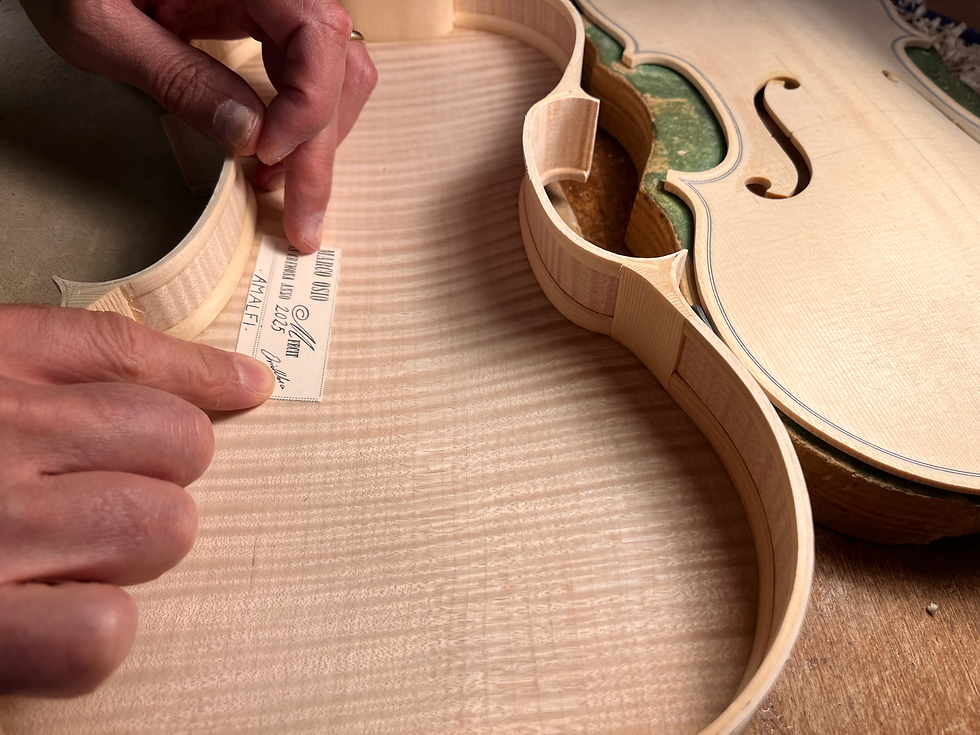What’s Behind a Label?
- Marco Osio
- Jul 20
- 2 min read
A label is little more than a small piece of paper glued inside the soundbox of a string instrument.You can only see it if you look closely, against the light.And yet, right there lies one of the most significant — and often misunderstood — details in violin making.
For many, it’s a signature, an indication of authorship, almost a certificate.But for a luthier, it’s something far more profound:a final gesture. A moment of responsibility.
When a Label Becomes a Statement
When I apply my label inside a violin, a viola, or a cello, I’m not simply completing a task.I’m stating that this instrument is mine, in the fullest sense.That every choice, every curve, every sound it will produce reflects something about me — my vision, my process, my values.

A Signature That Truly Speaks
Those who receive one of my instruments know exactly who made it, where it was made, and why.They know that every centimeter of wood was selected, carved, and listened to by me, personally.They know that the voice of the instrument is the result of a single vision, matured through years of experience and dialogue with musicians.
An authentic label is not just a name:it’s a living story — traceable, consistent, and verifiable.It’s a commitment to the musician and to the Cremonese tradition that I proudly continue.
When Labels Lose Their Meaning
Over time, in some circles — though not commonly or universally — instruments of unclear origin have been completed using labels of unrelated luthiers, sometimes recent graduates or individuals not yet active as makers.This questionable practice has contributed to confusion, mistrust, and challenges in attribution.
That’s why, today more than ever, it matters to know who is truly behind a label.
A Conscious Choice for the Player
Now more than ever, musicians and buyers have the right — and the responsibility — to ask:Who is behind this label?Is it just a name? Is it marketing? A signature of convenience?Or is it truly the voice of the maker who built the instrument?
In my workshop, clients who wish to do so can follow the entire making process in agreement with me —from wood selection to arching, varnishing, and final setup.Every step is visible, shared, and lived together.
A Sound Born from a True Story
In the world of contemporary violin making, transparency is a form of respect —towards musicians, towards colleagues, and towards history.
This is why my instruments carry a label that requires no further explanation.Those who own one know it: they didn’t just buy an object. They chose a companion, a voice, a piece of truth.
🔍 Curious to see how one of my instruments is born? Visit www.marcoosio.com or follow me on YouTube to explore the making process from my workshop in Cremona.
Every instrument has a voice. But it also has a signature.And behind every signature, there’s a story.



